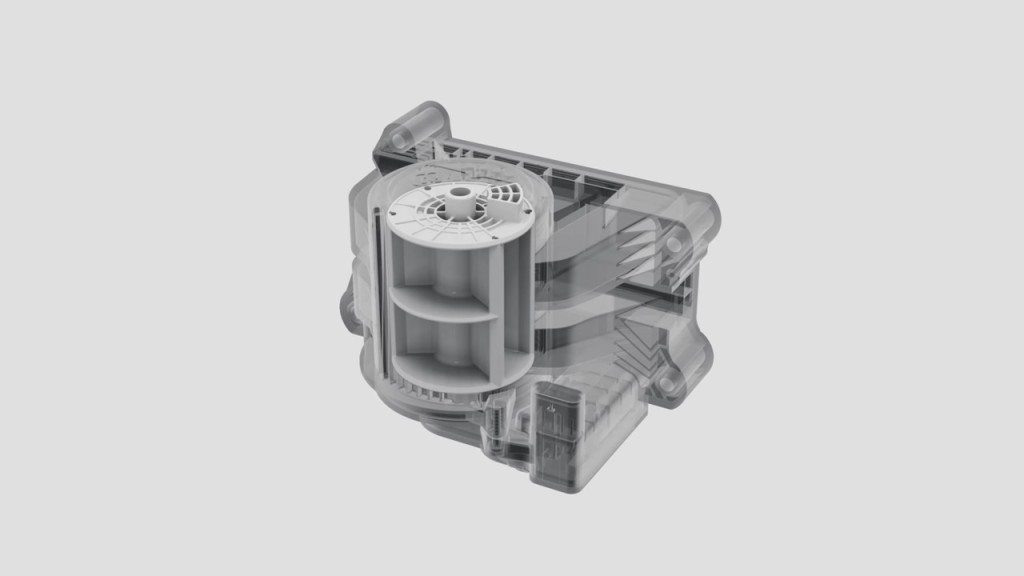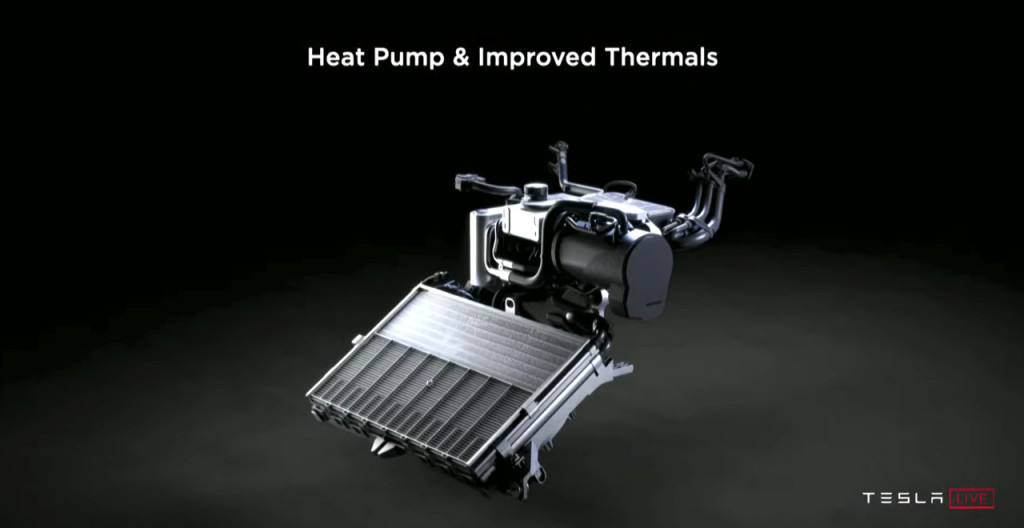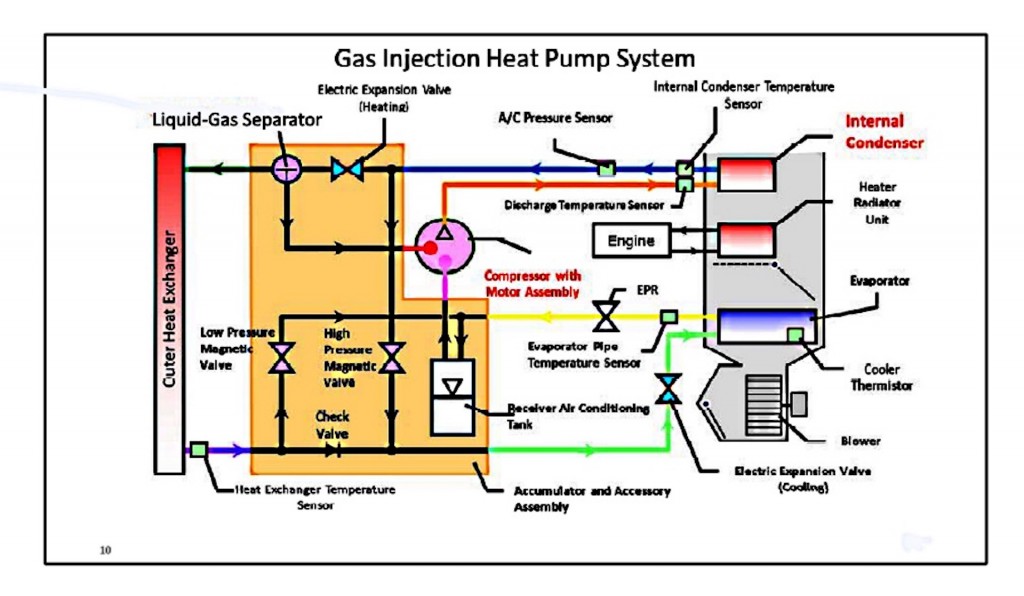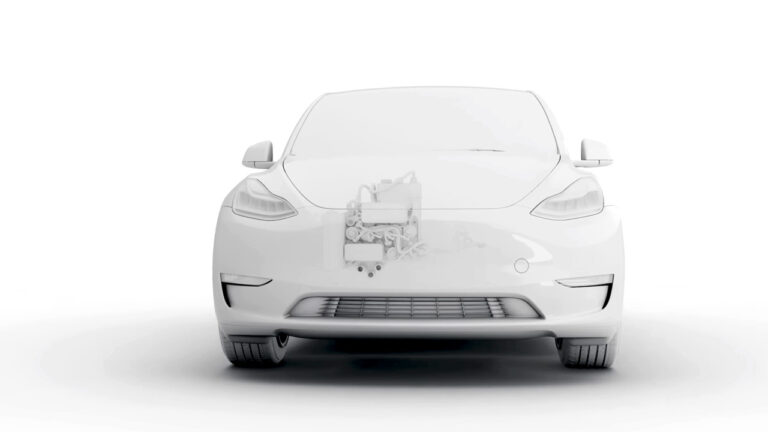Tesla last week outlined some of the details that distinguish its heat pump system that’s now included throughout its vehicle lineup.
The electric vehicle maker claims that its design performs well in very cold weather, where other heat pumps fall short.
Depending on the exact situation, Tesla claims, its cars might be using as little as a quarter of the energy with the heat pump system than without, to keep the cabin warm. Overall, it can result in up to 20% less energy consumed during cold-weather travel, Tesla says—although it’s unclear if this is specifically referring to the energy consumed in the cabin.
Tesla is by no means the only automaker to find that heat pumps remedy EV cold-weather range loss. It resisted the technology years ago.
Prior to the heat pump, Tesla did have a strategy for using waste heat from the motor and power electronics to help warm the battery, and it claimed boosted cold-weather range without the additional complexity of a heat pump. But the company changed its mind with the heat pump that made its debut in the Model Y.
Tesla heat pump

Tesla heat pump

Tesla heat pump
The answer appears to be that it found a way to make the addition less complex. It designed a so-called super manifold that combines all the refrigerant channels and coolant channels that might otherwise be separate components. As it explains in this video, rather than redesigning the coolant loop, Tesla integrated the heat pump with an “octovalve” that turns to a different position depending on the mode of operation.
How heat pumps work
The Tesla video tips that heat pumps are a bit like building air conditioners, carrying heat from a cooler environment (inside) to a warmer environment (outside), only the opposite.
Unlike internal-combustion vehicles, EVs have no engine spewing out waste heat that can be used to heat the cabin. Resistive heating, like that used for space heaters, toasters, or hair dryers, takes a lot of energy away from range.
Heat pumps move heat around rather than generate it, and the physics can sound almost magical: A carefully chosen refrigerant—carries heat energy from its surroundings when it’s compressed into a gas and then releases heat as it condenses back to a liquid.

Tesla Model S Plaid thermal and heat pump
Heat pumps are one of the keys to help reduce EV cold-weather range loss because of that energy calculation. On an energy-in, energy-out basis, according to Bosch, one of the makers of heat pumps, a heat pump drawing 1 kw will generate the heat equivalent of between 2 and 3 kw. Mahle, another supplier, says its heat pump can recover 20% of cold-weather range loss.
There are some caveats to this. Heat pumps involve a lot of added cost and complexity; they can generate some noise that interrupts the silent EV experience; and they often don’t provide the quick results that resistive heating does. So owners might only see the payoff in efficiency over longer road trips—when they’ll help boost range and make it easier to reach the next charger without sacrificing cabin comfort.
Necessary piece for avoiding winter doldrums
Increasingly, companies are concluding that it’s worth the tradeoffs. General Motors, for instance, has emphasized that real-world advantage is behind why it’s decided to include heat pumps in all upcoming GM EVs.
There are new ways to configure the system, specifically for cold-weather gains. Rivian is in the process of redesigning its thermal system to include a heat pump, and in the latest heat pump for Hyundai and Kia models, heat scavenged from an array of drive components helps nudge the liquid refrigerant back to a gas, reducing its load and boosting the energy payoff.
Systems that have a heat pump combine it with resistive heating, for quick defogging/defrosting of the windshield and rapid cabin heat as it’s needed, then it passes the baton when it can to the heat pump. As the schematic for the system in the Toyota Prius Prime underscores, they can get very complex.

Toyota Prius Prime heat pump
This isn’t the first sighting of Tesla’s heat-pump design. In 2020, manufacturing expert Sandy Munro, of Munro & Associates, known for his teardown insights, posted a video about the new component.
Tesla’s own design hasn’t been completely trouble-free, either. The company has to remedy an issue with an improperly operating heat-pump valve, leading to depletion of refrigerant in the system and, potentially, some fogged-up windows. This Tesla heat-pump recall campaign, affecting nearly 27,000 vehicles from the 2020 through 2022 model years, was remedied with an over-the-air update.


